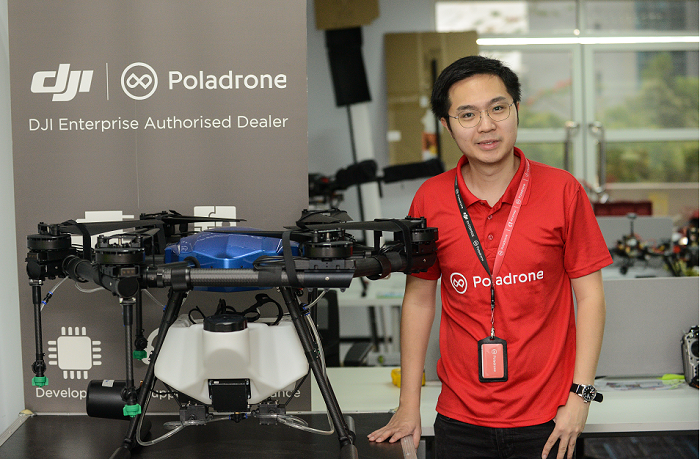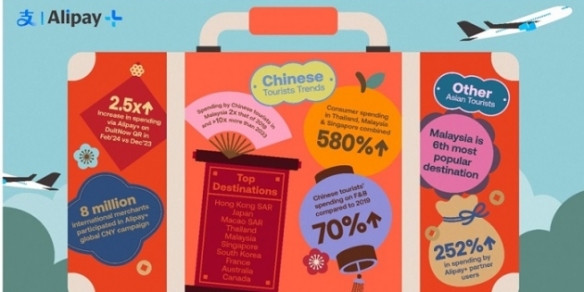Digerati50: Eye in the sky for plantations
By Kiran Kaur Sidhu August 22, 2020
- Cheong Jin Xi converts drone photography hobby to building platform for agriculture
- Capture data to extract information on plant density, road networks & boundaries

Cheong Jin Xi’s love affair with drones started at 15 years of age in 2006 when he studying in Australia. “The drone hobbyist community there is quite strong with groups of people across the whole region building their own drones – assembling, flying or racing for leisure.”
With this deep-set interest instilled early on, Cheong continued to pursue his love for drones, especially drone photography as a weekend hobby when he returned to Malaysia. In fact, when Poladrone Sdn Bhd was first launched in 2016, Cheong’s focus was on photography, completely different to what it is involved in today. “The initial idea was to make drone photography easy,” he says, explaining that the name of the company was inspired by combining the words ‘polaroid’ and ‘drone’.
The primary reason that drove Cheong to start his company was the lack of drone expertise in Malaysia. “When you match the lack of expertise with market demand and the solutions drones can offer, there is a very clear gap in the market.”
Today, Poladrone has 28 people with software engineers and data scientists making up more than half the team. The two critical roles of drones in agriculture: to provide insights to management for decision-making through large scale data analytics, and to reduce the reliance on labour through automation. “We’ve built an ecosystem for the agriculture industry, rather than just a drone platform.”
“First, drones are used to capture large amount of data of plantation land which will then be processed to extract valuable information such as planting density, road networks, boundaries, rivers and more,” he said.
While still in the early days, Poladrone bounced around the idea of offering other services beyond photography such as surveillance and public safety. Cheong quickly realised, however, the challenges of technology and privacy regulations in this particular field. “So the next natural step we took was in a space with limited players – agriculture,” he explains.
“One problem that big plantations have is that the management often don’t know what is happening on the ground. You would think that an oil palm plantation knows how many trees they have, but they have no idea,” he says.
Cheong reveals it is of great importance for plantations to know the number of trees at the site because it “will correlate directly to the fertiliser allocation and the use forecast”. He further explains: “Even a 1% off will translate to a few million [in cost] for them.”
Currently, six of the oil palm plantations in Malaysia including Sime Darby, the largest plantation company, are clients of Poladrone’s. Others include small medium sized plantations in the range of 30,000 to 40,000 hectares.
On top of offering its drone services for auditing in agriculture, Poladrone also distributes drones for DJI Enterprise, the largest drone manufacturer in the world based in China. “They control around 75% of the market share globally. This distribution agreement opens doors for us to sell to a lot of different industries.”
Some other areas for drone tech is surveying and mapping for infrastructure, public safety and civil defence, as well as oil and gas. While there are other prominent Malaysian drone tech players such as Aerodyne, Cheong believes Poladrone’s differentiating factor lies in its in-house built analytics solutions.
“A lot of the players in the market take third party solutions from Europe and United States. The accuracy of these solutions, because they are not customised for our local market, will at best be 96% whereas we guarantee our clients 99% accuracy.”
Four years in, Cheong shares the entrepreneurial lessons learnt so far: “Having a strong peer support group to bounce ideas and opinions with, is extremely important. As we entrepreneurs are involved in the business every single day, it is easy to lose perspective and make wrong decisions,” he warns.
“The market doesn’t care what you think. The important lesson learnt over the years is always build solutions and services that bring value to the market, and not solutions which look good.”
Poladrone is profitable and has yet to actively seek funding. But Cheong confirms that the company is open for opportunities when the time is right. Despite steady growth over the past year, the current Covid-19 pandemic and movement control order (MCO) has placed a strain on Poladrone. “Unexpectedly, our business from the private sector was hit badly during MCO, where our revenues fell by more than 80% in April and May.”
Responding to this plunge in earnings, Poladrone has “double down” on research and development (R&D), refined its product and strategized its roadmaps to be better prepared when the economy recovers. “Fortunately, we’ve been seeing a slight uptrend in business activity after MCO was converted to conditional MCO and we expect the drone industry to rebound even stronger than before the pandemic by end of this year.”
Prospects are bright for the drone economy post-Covid 19 for many reasons, says Cheong. “First and foremost, is that it significantly reduces the reliance on labour. In agriculture, drone sprayers has been proven to be more efficient than manual labour by a factor of 20 times. What this means is that we are able to empower our local communities and upskill the workforce to higher paying roles, while reducing the industry heavy reliance on foreign labour.”
Related Stories :


